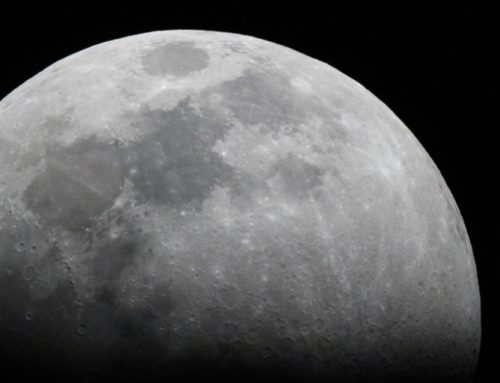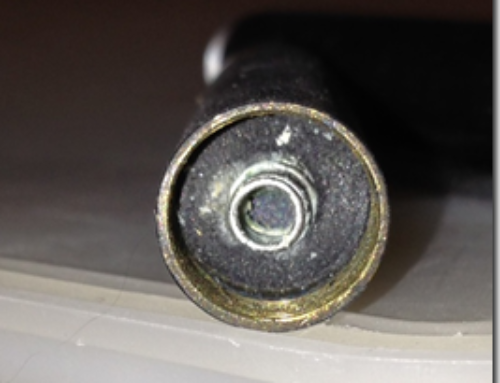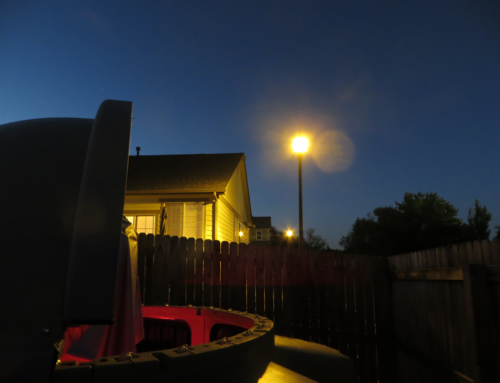In an earlier column about field of view, I showed that the focal length of a telescope really translates image size at the focal plane into an annular size of the object. The angular size, is the angular field of view. The connection is:
To estimate the angular size of the field of view of a telescope-imaging system, I just need the focal length and the imager size. Here is a handy table that combines these features and a summary of the fields of view for my instruments.
Here are the specs of the three small imaging sensors I use. I include the sensor dimensions and the angular field of view with each telescope and the size of the pixel on the sensor and its angular resolution.
low light level CCTV 8.4 mm 8.4 mm 14 u C925, 2350 mm 0.2 deg 0.2 deg 1.23 arc-sec/pixel C925 focal reducer,1504 mm 0.32 deg 0.32 deg 1.92 arc-sec/pixel Orion 400 mm 1.2 deg 1.2 deg 7.22 arc-sec/pixel Orion 162 mm 3 deg 3 deg 18 arc-sec/pixel Skyrix 618c 4.46 mm 3.8 mm 4.4 u C925, 2350 mm 0.11 deg 0.09 deg 0.39 arc-sec/pixel C925 focal reducer,1504 mm 0.17 deg 0.14 deg 0.6 arc-sec/pixel Orion 400 mm 0.64 deg 0.54 deg 2.27 arc-sec/pixel Orion 162 mm 1.58 deg 1.34 deg 5.6 arc-sec/pixel Skyrix 274c 8.5 mm 6.8 mm 4.4 u C925, 2350 mm 0.21 deg 0.17 deg 0.39 arc-sec/pixel C925 focal reducer,1504 mm 0.32 deg 0.26 deg 0.6 arc-sec/pixel Orion 400 mm 1.22 deg 0.97 deg 2.27 arc-sec/pixel Orion 162 mm 3 deg 2.41 deg 5.6 arc-sec/pixel





